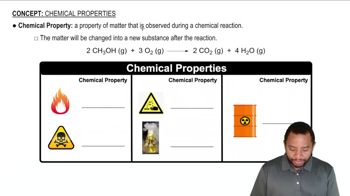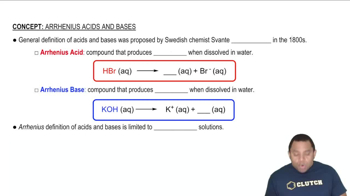Here are the essential concepts you must grasp in order to answer the question correctly.
Chemical Reactions
A chemical reaction involves the transformation of reactants into products through the breaking and forming of chemical bonds. Understanding the types of reactions, such as synthesis, decomposition, and acid-base reactions, is essential for writing balanced equations. In this case, the reaction involves boron oxide reacting with water to form boric acid.
Recommended video:
Balancing Chemical Equations
Balancing chemical equations is the process of ensuring that the number of atoms for each element is the same on both sides of the equation. This is based on the law of conservation of mass, which states that matter cannot be created or destroyed in a chemical reaction. Proper balancing is crucial for accurately representing the reaction and its stoichiometry.
Recommended video:
Balancing Chemical Equations
Acid-Base Chemistry
Acid-base chemistry focuses on the properties and reactions of acids and bases. In this context, boric acid acts as a weak acid when formed from the dissolution of boron oxide in water. Understanding the behavior of acids and bases, including their dissociation in water and their role in neutralization reactions, is important for predicting the products of the reaction.
Recommended video:
Arrhenius Acids and Bases

 Verified step by step guidance
Verified step by step guidance


